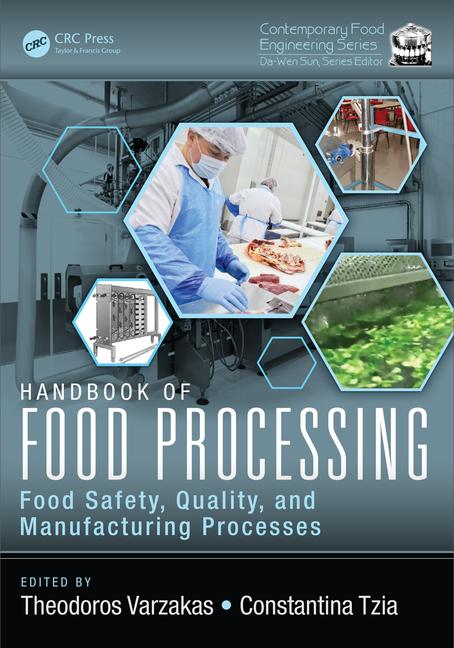Dry Sanitation in Food Processing: Enhancing Safety for Low-Moisture Foods

Image credit: GCShutter/E+ via Getty Images
Dry sanitation is a pivotal practice in the food processing industry, particularly for facilities that produce low-moisture or low-water-activity foods. This method involves cleaning and sanitizing food processing equipment and facilities without the use of water, relying instead on dry methods such as vacuuming, brushing, and the use of chemical sanitizers.
Low-moisture and low-water-activity foods like flour, nuts, cereals, powdered milk, and spices are more prone to microbial growth when wet. Introducing water during cleaning can create an environment that is conducive to microbial proliferation, posing a significant contamination risk. Dry environments are less likely to support the growth of pathogens such as Salmonella and Escherichia coli, which can thrive in moist conditions. Dry sanitation helps maintain these environments, thereby enhancing the overall safety protocols for processing low-moisture foods.
The need to ensure the safety of dry foods has never been more important. In 2022, there was significant attention to infant formula—a low-moisture food—after the production facility was linked to Cronobacter infections that resulted in infant hospitalizations and deaths. Additionally, the U.S. Centers for Disease Control and Prevention reported from 2016–2019 that there were approximately 100 multistate E. coli cases linked to flour and related products.
However, with current non-aqueous based sanitation protocols, there is still uncertainty regarding effectiveness, application, and occupational concerns surrounding these alternative strategies. This article explores some of the trending technologies and approaches being developed to ensure the microbial safety of low-moisture foods in dry food processing facilities.
Sanitation Required, Not Optional
Comprehensive sanitation controls are a key component of a food processing facility's safety program and are a requirement under the 2011 Food Safety Modernization Act (FSMA). The sanitation procedures must ensure that the facility remains in a sanitary condition to minimize or prevent hazards. FSMA also underscores the importance of sanitary design in food processing facilities. The equipment and facility structures must be designed to allow thorough cleaning and sanitation without the accumulation of residues that can harbor pathogens. This is crucial for preventing transient contaminants from turning into resident strains that persist in the production environment.
Dry Sanitation Challenges
Pathogen control in the production of low-water-activity foods is difficult to accomplish with current dry sanitation products or techniques. Ethanol and isopropanol are commonly used sanitizers in low-water-activity food processing environments; however, they are highly flammable. The use of these alcohol-based sanitizers require that processing equipment be cooled prior to cleaning with these agents. This limits the frequency of cleaning, given the labor and time costs to processors to shut down the line.
Additionally, alternatives to dry sanitation need to work as well as their water-based counterparts in terms of effectiveness against pathogens and removal of residues that can lead to biofilm formation. Biofilms are a community of microorganisms that adhere to surfaces via an extracellular polymeric substance matrix.1 Incomplete cleaning leaves organic residue on production surfaces, providing nutrients for microorganisms. This leads to microbial attachments and biofilm formation and, ultimately, food contamination as it comes in contact with the biofilm.
Physical cleaning methods, such as brushing and scraping, can effectively remove residual organic matter without using water. However, these methods can also damage the equipment, creating scratches where bacteria can easily attach and colonize. Non-aqueous solutions are needed that are effective against pathogens, address residue removal and protect worker safety without a significant time loss to food production.
Alternative Dry Sanitation Approaches
The IAFNS Food Microbiology Committee funds ongoing research that could potentially provide a different approach to dry sanitation. Dr. Lynne McLandsborough, Professor at the University of Massachusetts–Amherst, is utilizing organic acids in combination with non-polar liquids as a viable alternative to alcohol-based sanitizers. Organic acids are commonly employed as food additives or antimicrobial treatments to inhibit pathogen growth. By utilizing a hydrophobic environment, such as those found in non-polar liquids, the antimicrobial activity of the organic acids can be increased. Moreover, the non-polar liquids would have a higher flash point compared to ethanol or isopropanol-based compounds, thereby enhancing safety by preventing fires during use.
Another approach is the use of superheated steam to sanitize the production environment. Dr. Abigail Snyder at Cornell University presented her findings utilizing this technology at the IAFNS Annual Summer Science Symposium in early June 2024 in Washington D.C. The dry steam is heated to more than 121 °C (250 °F) and is applied to production surfaces to kill any pathogens or microbes. It does not leave moisture or condensation to harbor residual pathogen growth.
These methods provide alternative sanitizing tools that decrease the fire hazards associated with traditional alcohol-based sanitizers. They also can increase the frequency of sanitation work and, ultimately, improve the safety of foods processed in dry environments.
Takeaway
Dry sanitation requires risk balancing. The risk posed by residual moisture needs to be addressed alongside the flammability of alcohol-based sanitizers. With careful approaches, new and existing dry sanitation techniques can be effective and safe, but require attention to detail and to their chemical properties.
Reference
- Donlan, Rodney M. "Biofilms: Microbial Life on Surfaces." Emerging Infectious Diseases 9, no. 9 (September 2002): 881–890. https://www.ncbi.nlm.nih.gov/pmc/articles/PMC2732559/#:~:text=A%20biofilm%20is%20an%20assemblage,the%20discovery%20of%20microbial%20biofilms.
Looking for a reprint of this article?
From high-res PDFs to custom plaques, order your copy today!







